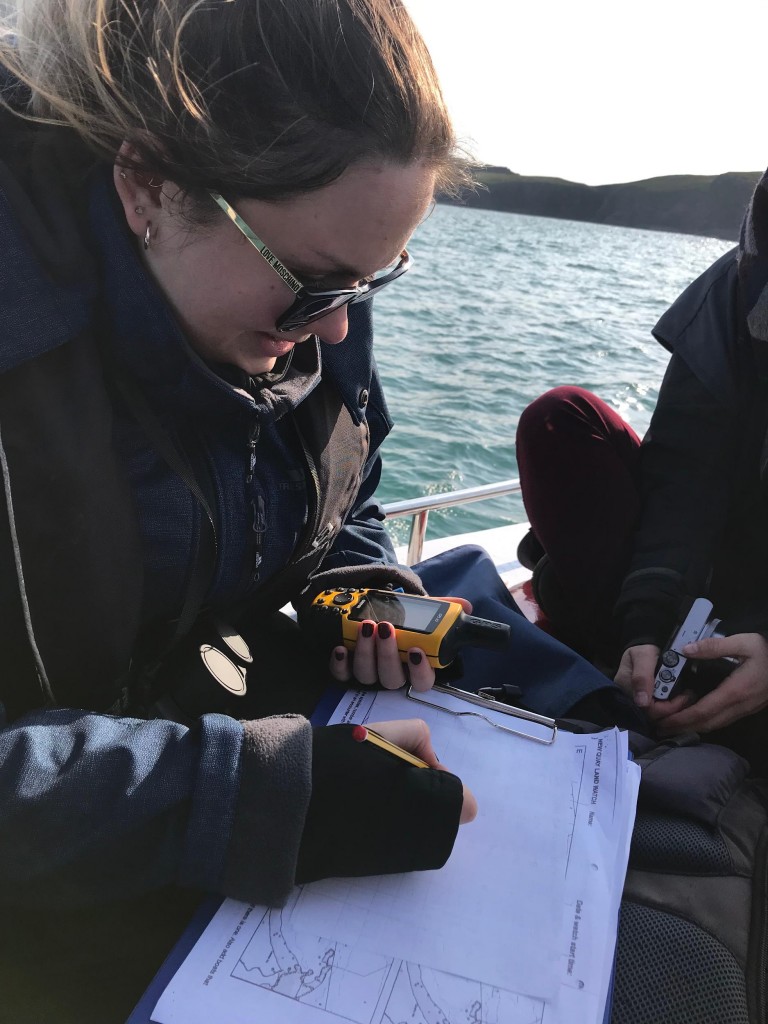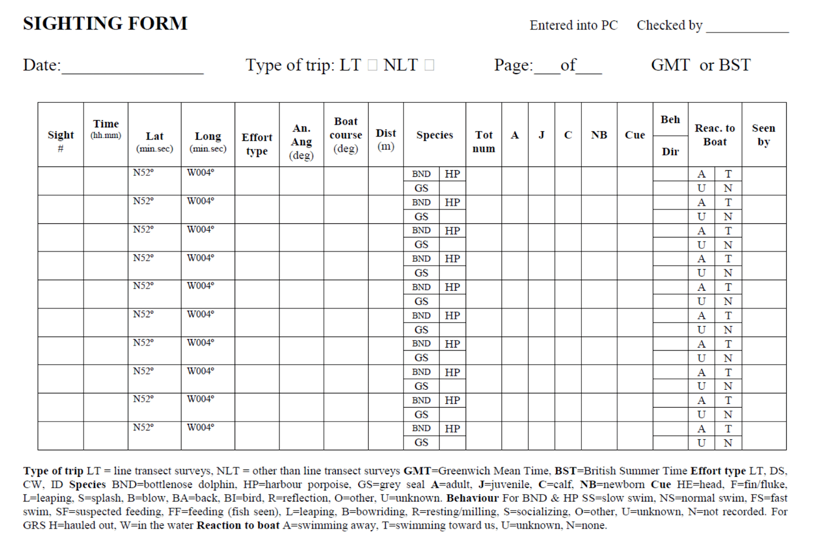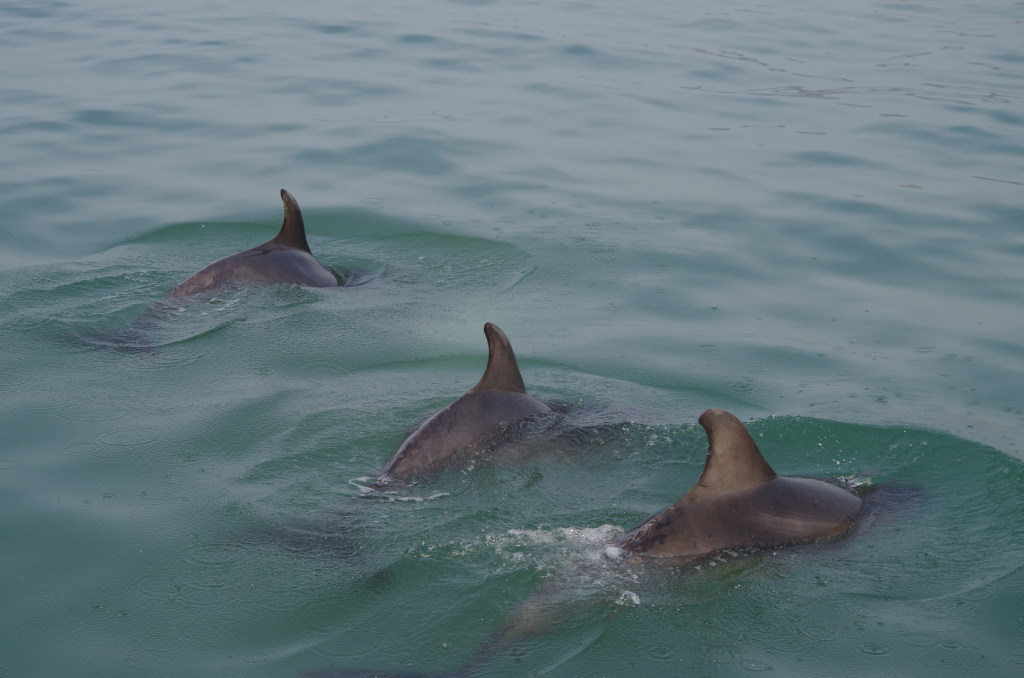In New Quay the Sea Watch Foundation has its flagship study, the Cardigan Bay Monitoring Project. In the past the study has led to the set up of two Special Areas of Conservation (SAC) in Cardigan Bay, which aids to the protection of bottlenose dolphins’ and other marine species habitat.
A big part of the data used in this study comes from boat surveys. Every day one of the Sea Watch Foundation (SWF) interns heads out with Dolphin Spotting Boat Trips (DSBT) on either their 1 or 2 hour boat trips. Boat surveys provide the advantage of getting slightly closer to the cetaceans than when on a land watch and allows for a better distinction between sightings of individuals.
At the start of the day the intern schedule for the boat will call up DSBT to check firstly whether the boats are going and secondly whether there is space to join. If there is a boat and space the SWF intern will spend their day sitting on the boat collecting a variety of effort data, record sightings, and lastly take pictures of the bottlenose dolphins’ dorsal fins for photo-ID.
For effort data the following components are recorded in 15 minute intervals: sea state in Beaufort scale, swell height, visibility, precipitation, effort type, GPS coordinates, boat activity, the speed of the boat, and lastly the course of the boat. The boat course and speed are read off from the GPS. Boat activity is the number of other vessels that can be spotted from the DSBT location, when recording the number, one also specifies what type of boats there are. The effort types are divided into 4 categories: casual watch (CW), dedicated search (DS), line transect (LT), and photo identification (ID). When it is just one intern collecting data from the boat the effort type is always classified as casual watch. Effort data is important to understand the conditions sighting have taken place in , which allows to account for accuracy and reliability of the data during analysis. Research Assistant Claudia records data, as shown in the following image. If the visibility is low and there is a large swell and high sea state then it becomes more challenging to spot animals accurately in the water, which in turn will affect the accuracy of the collected data during that boat trip.

Image of RA recording data during a boat survey. Ellie Richardson/ Sea Watch Foundation
Once a cetacean or seal is spotted, it is identified and the coordinates and angle between the animals and the boat are immediately recorded, as well as the boat course and the distance. The cue of what allowed one to spot the animal and the behaviour displayed is noted, as well the reaction (or lack thereof) to the boat (see form used below). If the animals are heading in a certain direction, this is written down. The total number of animals is recorded, with a distinction made between the number of adults, juveniles, calves and newborn.

Sightings form/ Sea Watch Foundation
Once all the sightings details are neatly written down on the data sheet, and the sighting is bottlenose dolphins, the camera is taken out to take pictures for photo identification. For photo ID one aims the take good clear pictures of the dolphin’s dorsal fin, which is as unique to each individual dolphin, as a human fingerprint is to us. So far, through photo identification the SWF has been able to identify a semi resident population of over 200 bottlenose dolphins here in New Quay. The identification also for an insight on what might be negatively impacting the dolphins, family ties and interactions, and how they utilise the area.
As the SWF is a national charity, it relies on donations to continue it’s hard the work. The photo ID has allowed for the set up of the Adopt A Dolphin Scheme. One can adopt a dolphin from £3.50 a month, and the SWF will in turn provide you with information on the dolphin, a monthly newsletter, an ID poster, soft toy dolphin, access to a secret part of our website, a voucher for a future boat trip and other great goodies. All proceeds go directly back into the research and protection of the amazing marine mammals found in Cardigan Bay!
Article written by Research Intern Saskia van Dongen.

























